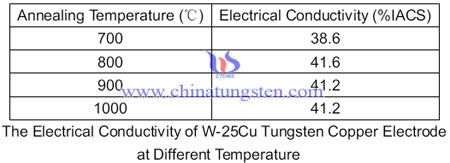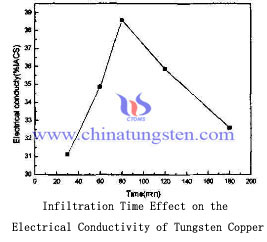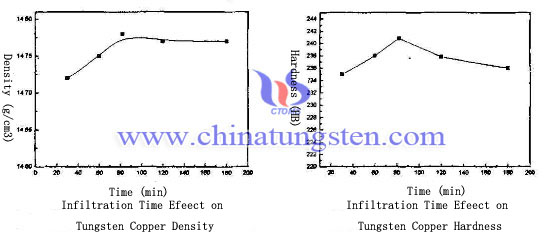Humidity Sensor Using A Mixture of Ammonium Paratungstate Pentahydrate and Aluminium Sulphate
- Details
- Category: Tungsten Information
- Published on Thursday, 03 December 2015 09:57
| Tungsten Supplier: Chinatungsten Online www.chinatungsten.com | Tel.: 86 592 5129696; Fax: 86 592 5129797;Email:sales@chinatungsten.com |
| Tungsten News & Prices, 3G Version: http://3g.chinatungsten.com | Molybdenum News & Molybdenum Price: http://news.molybdenum.com.cn |
Determination of Bismuth in High Purity Ammonium Paratungstate by Coprecipitation-Hydride Generation-Atomic Fluorescence Spectrometry
- Details
- Category: Tungsten Information
- Published on Thursday, 03 December 2015 09:54
| Tungsten Supplier: Chinatungsten Online www.chinatungsten.com | Tel.: 86 592 5129696; Fax: 86 592 5129797;Email:sales@chinatungsten.com |
| Tungsten News & Prices, 3G Version: http://3g.chinatungsten.com | Molybdenum News & Molybdenum Price: http://news.molybdenum.com.cn |
Annealing Process Effect on Tungsten Copper Electrode Properties
- Details
- Category: Tungsten Information
- Published on Wednesday, 02 December 2015 16:22
After infiltration cooling rate has a great impact on the copper layer quality, too fast cooling will be easy to produce pores and tiny cracks. Meanwhile, due to the furnace temperature unevenness, the copper layer thickness of products are not easy to be uniform, so it requires the use of a copper infiltrated after annealing treatment, which further improving the performance of a tungsten-copper electrode. Some experiments shows that annealing process has a great influence on the electrical conductivity of tungsten copper electrode, there is a table of the electrical conductivity of W-25Cu tungsten copper electrode at different temperature.

| Tungsten Copper Supplier: Chinatungsten Online tungsten-copper.com | Tel.: 86 592 5129696; Fax: 86 592 5129797;Email:sales@chinatungsten.com |
| Tungsten News & Prices, 3G Version: http://3g.chinatungsten.com | Molybdenum News & Molybdenum Price: http://news.molybdenum.com.cn |
Infiltration Time Effect on Tungsten Copper Electrode Properties III
- Details
- Category: Tungsten Information
- Published on Wednesday, 02 December 2015 16:20
Viewed from the electrical conductivity of tungsten copper electrode, it is increasing with the infiltration time. We can learn from the graph that infiltration time from 30 min to 80min, the conductivity of tungsten copper alloy from 32.12% IACS to 38.6% IACS. While the infiltration time continues to increase, the conductivity was reduced from 38.6% IACS to 32.58% IACS.
This is due to the conductive properties of tungsten-copper depends mainly on the copper content and connectivity, as time increases, the amount of copper was infiltrated increases, more evenly distributed organizations tungsten copper, tungsten copper electrode conductivity correspondingly improved. But if infiltration time continued to increase, after that tungsten particles begin to grow up and there may arise organization copper pool, which causes the uneven distribution, so the hardness and conductivity of tungsten copper electrode will decrease.

| Tungsten Copper Supplier: Chinatungsten Online tungsten-copper.com | Tel.: 86 592 5129696; Fax: 86 592 5129797;Email:sales@chinatungsten.com |
| Tungsten News & Prices, 3G Version: http://3g.chinatungsten.com | Molybdenum News & Molybdenum Price: http://news.molybdenum.com.cn |
Thermal Polycondensation of Ammonium Paratungstate
- Details
- Category: Tungsten Information
- Published on Wednesday, 02 December 2015 09:55
Connected with the examination of the thermal polycondensation of ammonium paratungstate pentahydrate the chemical and morphological properties of intermediate phases formed during the thermal decomposition of APT have been investigated. We have studied the pH and the turbidity of the aqueous solutions of the intermediate phases, the solubility of the phases, and their rehydratation capability as well as the morphology of the crystallite granules and the grain size distribution. These properties of the original APT have been related to the same properties of the products of decomposition formed between different temperature ranges. The results obtained show unambiguously that each of the above mentioned properties suddenly changes in the temperature range 225 to 250°C. This temperature range coincides with the formation temperature of a new phase called APT II. The most probable formula of APT II is (NH4)8 [H2W13O43(OH)2]·H2O.
| Tungsten Supplier: Chinatungsten Online www.chinatungsten.com | Tel.: 86 592 5129696; Fax: 86 592 5129797;Email:sales@chinatungsten.com |
| Tungsten News & Prices, 3G Version: http://3g.chinatungsten.com | Molybdenum News & Molybdenum Price: http://news.molybdenum.com.cn |
Method for Producing Ammonium Paratungstate
- Details
- Category: Tungsten Information
- Published on Wednesday, 02 December 2015 09:52
| Tungsten Supplier: Chinatungsten Online www.chinatungsten.com | Tel.: 86 592 5129696; Fax: 86 592 5129797;Email:sales@chinatungsten.com |
| Tungsten News & Prices, 3G Version: http://3g.chinatungsten.com | Molybdenum News & Molybdenum Price: http://news.molybdenum.com.cn |
Infiltration Time Effect on Tungsten Copper Electrode Properties II
- Details
- Category: Tungsten Information
- Published on Tuesday, 01 December 2015 17:46
In addition, due to the diffusion of crystal grains, the odds of the liquid copper into the tungsten particles increases, the lattice stress decreases, and the tungsten particles are rearranged so that the partial so that the construction is more uniform. Viewed from the cost, it is useless to increase infiltration time.
In the early of infiltration, tungsten skeleton was not completely infiltrated by copper solution, which lack of density and hardness. However, the infiltration has become more and more fully as time goes by so that the density and hardness of tungsten copper electrode will rise. But when infiltration is completely and time continue to increase, it may lead tungsten particle to grow up and evaporated tungsten particles in liquid copper, which makes tissue distribution is uneven, the hardness decreased accordingly. Except that the density and hardness of tungsten copper electrode, the electrical conductivity is also an crucial property when it used as electrode in EDM or ECM.
More infomation about infiltration time effect on tungsten copper electrode properties, click here:
http://news.chinatungsten.com/en/tungsten-information/80929-ti-10426
| Tungsten Copper Supplier: Chinatungsten Online tungsten-copper.com | Tel.: 86 592 5129696; Fax: 86 592 5129797;Email:sales@chinatungsten.com |
| Tungsten News & Prices, 3G Version: http://3g.chinatungsten.com | Molybdenum News & Molybdenum Price: http://news.molybdenum.com.cn |
Infiltration Time Effect on Tungsten Copper Electrode Properties
- Details
- Category: Tungsten Information
- Published on Tuesday, 01 December 2015 16:46
Take W-Cu tungsten copper electrode as an example, with increasing infiltration time, the density of tungsten copper electrode increases. And after that the infiltration density reaches the maximum, the density of tungsten copper electrode decreases by the time. The density and hardness of tungsten copper W-25Cu in different infiltration time as follow:

In the process of infiltration, copper solution completely infiltrated tungsten skeleton will take some time, with the increasing infiltration time, tungsten skeleton has infiltrated more fully, the corresponding density of tungsten copper electrode was improved. However, when tungsten skeleton was completely infiltrated by copper solution, if the temperature continues to increase the infiltration density changed a little longer this time but likely to cause the liquid copper tungsten particle erosion, some places inside may appear copper pool, which decrease the density of tungsten copper electrode.
| Tungsten Copper Supplier: Chinatungsten Online tungsten-copper.com | Tel.: 86 592 5129696; Fax: 86 592 5129797;Email:sales@chinatungsten.com |
| Tungsten News & Prices, 3G Version: http://3g.chinatungsten.com | Molybdenum News & Molybdenum Price: http://news.molybdenum.com.cn |
Electrolytic Method for Producing Ammonium Paratungstate from Cemented Tungsten Carbide
- Details
- Category: Tungsten Information
- Published on Tuesday, 01 December 2015 11:40
| Tungsten Supplier: Chinatungsten Online www.chinatungsten.com | Tel.: 86 592 5129696; Fax: 86 592 5129797;Email:sales@chinatungsten.com |
| Tungsten News & Prices, 3G Version: http://3g.chinatungsten.com | Molybdenum News & Molybdenum Price: http://news.molybdenum.com.cn |
Preparation and Characterization of WO3 from Ammonium Paratungstate via Hydrothermal Method
- Details
- Category: Tungsten Information
- Published on Tuesday, 01 December 2015 11:35
Tungsten trioxide powder has been prepared from ammonium paratungstate via hydrothermal method using orthogonal and mono-level design of experiments. The effects of preparation process on particle size, specific surface area, crystal form and crystalline morphology of the tungsten trioxide was investigated by TEM and XRD etc. It was found that the optimum conditions of the preparation are hydrothermal crystallization for 8 h at 180°C, followed by vacuum drying at 45°C and calcination at 500°C for 2 h. The blank reference experiment shows that hydrothermal crystallization treatment favors the formation of hexagonal tungsten trioxide, and the tungsten trioxide powder sample prepared by this method has a high degree of crystallinity.
| Tungsten Supplier: Chinatungsten Online www.chinatungsten.com | Tel.: 86 592 5129696; Fax: 86 592 5129797;Email:sales@chinatungsten.com |
| Tungsten News & Prices, 3G Version: http://3g.chinatungsten.com | Molybdenum News & Molybdenum Price: http://news.molybdenum.com.cn |



 sales@chinatungsten.com
sales@chinatungsten.com